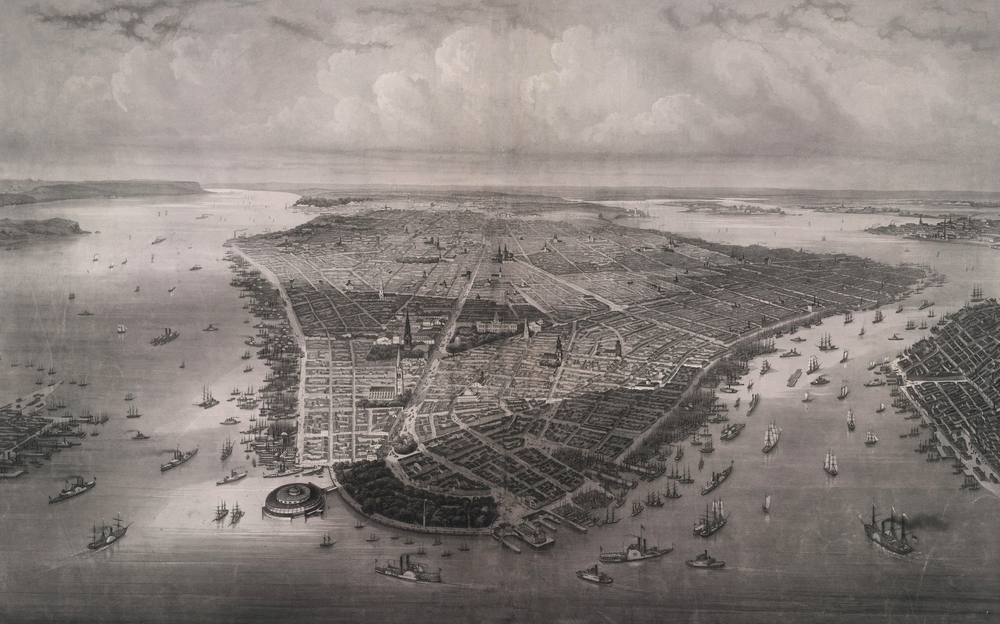Jack the Ripper, the infamous figure synonymous with one of history’s most notorious murder sprees, has long captured the imagination of true crime enthusiasts. His brutal killings in London’s Whitechapel district during 1888, where women were found mutilated and slain, remain unsolved to this day. Many people in the years since have compiled their own theories and lists of best Jack the Ripper suspects. Some of these ideas extend far beyond London’s foggy streets. One of the most tantalizing theories suggests that Jack the Ripper might have crossed the Atlantic and continued his killing spree in New York City.
During the late 19th and early 20th centuries, a series of brutal murders in New York bore striking similarities to the London killings. The unsolved nature of these crimes, paired with growing public hysteria, led many to believe that the Ripper had arrived in America. While the theory remains speculative, the “New York Ripper” murders have carved a place in the city’s dark history, cementing the idea that Jack the Ripper’s reign of terror may not have been confined to London alone.
The 1891 New York Ripper Murders
In the spring of 1891, New York City’s Lower East Side became the scene of several grisly murders that sent shockwaves through the city. These killings mirrored the horrific slayings in Whitechapel, raising immediate suspicions that the infamous killer had traveled across the ocean. The victims were predominantly women of lower socioeconomic status, many of whom worked as prostitutes. Much like the London Ripper victims, these women were found with their throats slashed and bodies mutilated, drawing eerie parallels to Jack the Ripper’s brutal modus operandi.
On April 24, 1891, the body of Carrie Brown, a prostitute, was discovered in a seedy hotel near the East River. Her brutalized corpse was found with telltale signs of mutilation that matched the Ripper’s signature style. The newspapers were quick to latch onto the connection, dubbing the killer “Jack the Ripper” and fueling the fear that the world’s most notorious murderer had found a new hunting ground in New York.
The investigation soon led to the arrest of Ameer Ben Ali, an Algerian immigrant, who was accused of Carrie Brown’s murder. His conviction was riddled with controversy, stemming from weak evidence, anti-immigrant bias, and the public pressure to solve the case quickly. Despite his imprisonment, many doubted that Ali was the true killer, leaving the question of whether Jack the Ripper was involved open for speculation.
A Panic in New York
Newspapers at the time thrived on sensationalism, and the gruesome details of the murders made for compelling headlines. The press was quick to link the Ripper to New York’s murders, capitalizing on the public’s fear and fascination with the unsolved London crimes. This atmosphere of panic was further fueled by the fact that Jack the Ripper had never been caught, leaving open the possibility that he could have fled to America to continue his killing spree.
The media’s role in stoking public hysteria cannot be understated. The fear of an unstoppable killer moving freely between continents captured the imaginations of readers, and for many, it seemed all too plausible that the same Ripper who had terrorized London had now come to haunt New York.
The James Kelly Theory
One of the most intriguing theories surrounding the New York Ripper murders is the possible involvement of James Kelly, a London man who had been convicted of murdering his wife in 1883. Kelly’s crime bore notable similarities to Jack the Ripper’s killings: his wife had been stabbed in the neck, and Kelly was known for his violent tendencies. Even more compelling was the fact that Kelly had escaped from Broadmoor Asylum in 1888—the same year the Whitechapel murders began.
Following his escape, Kelly vanished for several years, only reappearing in 1927 when he voluntarily returned to Broadmoor. Some theorists have speculated that Kelly fled to New York after the London murders, and his presence in the city might explain the brutal killings that took place in 1891. The timing of Kelly’s escape and disappearance aligns with the Ripper murders on both sides of the Atlantic, making him a credible suspect.
While there is no concrete evidence linking Kelly to either the London or New York murders, his escape and the striking similarities between his crime and the Ripper’s methods have made him a key figure in the ongoing speculation surrounding the case.
A Legacy of Fear and Mystery
While it is unlikely that Jack the Ripper himself ever set foot in New York, the association between his name and the 1891 murders speaks to the enduring power of his legend. The idea that the world’s most infamous killer might have continued his reign of terror across the ocean captured the imaginations of many, contributing to the mystique that surrounds the Ripper to this day.
Though the New York Ripper murders remain unsolved, they stand as a haunting reminder of how fear, crime, and sensationalism can intertwine to create a narrative that endures long after the facts have faded. In the case of Jack the Ripper, the legend has transcended time and place, casting its shadow over two of the world’s greatest cities.
Keep an eye for more latest news & updates on Ny City Paper!
